Soma Pulsar-23 Handleiding
Soma
Drumcomputer
Pulsar-23
Bekijk gratis de handleiding van Soma Pulsar-23 (32 pagina’s), behorend tot de categorie Drumcomputer. Deze gids werd als nuttig beoordeeld door 96 mensen en kreeg gemiddeld 4.5 sterren uit 48.5 reviews. Heb je een vraag over Soma Pulsar-23 of wil je andere gebruikers van dit product iets vragen? Stel een vraag
Pagina 1/32

USER
MANUAL

PULSAR 23 USER MANUAL•
Pulsar-23 is a complex device with many non-obvious functions and capabilities. To unleash
its full potential, it is strongly recommended to read these instructions.
GENERAL OVERVIEW
Pulsar-23 is a multi-functional analog synthesizer and generator of complex rhythmic patterns.
The Pulsar consists of 23 different modules, including four flexible sound generators with
completely different structures, four envelope generators, four looper-recorders, a clock
generator with dividers, a controlled chaos generator, an LFO, a two-channel CV-controlled
effects processor, distortion, two controlled amplifiers, an inverter, a controlled inverter and
two controlled analog switches.
In addition to these 23 main units, the Pulsar also contains 13 auxiliary units, such as a
four-channel MIDI to CV converter, a noise generator, four attenuators, two dynamic CV
generators with sensory control, two impulse converters and single passive electronic com-
ponents for live circuit bending.
Pulsar-23 can be used for the synthesis of percussion instruments and rhythms, bass and
melodic lines, effects and sound landscapes, as well as a source of control voltage. The Pul-
sar functions in three different modes: stand-alone, MIDI control and CV control. Moreover,
all the above features and control modes can work simultaneously in any proportion or
combination. Additionally, Pulsar offers live circuit bending capabilities and the use of the
artist’s body conductivity to create patches and cross modulations.
Pulsar continues the line of organismic synthesizers begun by LYRA-8, but now in the area
of percussion instruments.
ORGANISMIC SYNTHESIZER
"Organismic" means that some of the principles of how living systems — organisms — operate,
form the basis of development:
• Everything can interact with everything, forming multiple feedback loops, resulting in very
complex behavior of the system, even with a simple set of its constituent elements.
• The blurring of the functions of organs and parts, allowing them to be interpreted differ-
ently, depending on which context and connection they work in.
• The absence of a rigid linear structure, where there is a clearly leading head and the tail
strictly following it. Any part of the body can become for a while both leading and driven.
• The resulting behavior is a dynamic equilibrium spontaneously formed between the inter-
acting parts of the living system.
These principles are most clearly expressed in neurosystems (brain) and systems built on
their basis (for example, human society).
Consider how these principles were implemented in Pulsar:
The Pulsar is a semi-modular system, where each unit has an input, output and several
available control points that can control the processing. The audio and control signals op-
erate in the same voltage range of 0-10 volts, and the inputs and outputs are organized in
such a way that the audio signal can be a control signal, and the control signal can be used
as an audio source. For example, you can use the bass drum channel as an LFO, the LFO as
an additional sound oscillator, the clock generator as a source of percussive sounds, and
the bass synth channel as a clock source for the loopers. This lets you build many different
structures, including paradoxical ones.

PULSAR 23USER MANUAL •
You can connect the inputs and outputs of the Pulsar in any combination, without worrying
that something will be damaged or done “incorrectly”. At the same time, due to the smart
organization of the input and output impedance of the connection points, several signals
connected together will be automatically mixed, and the points that can work as input and
output (for example, triggering envelope generators) will figure out on their own what is
connected to them and start to either receive the signal, or send it, or they will begin mutual
modulation if a point with the same behavior is connected.
All inputs and outputs of the Pulsar are ready for integration into a Eurorack system and
are protected from overloads. This means you can do all kinds of experiments with various
sound equipment, without the danger of damaging the instrument. The permissible volt-
age range connected to the inputs of the Pulsar is -20 to +20 volts. However, the effective
operation of the input is limited to a range of 0 to 10 volts.
Without any patching, Pulsar-23 is a drum machine with a sequencer with a conventional
linear structure: clock generator -> looper -> sound modules -> FX -> output. The full
capabilities of the Pulsar are revealed when you start connecting modules to each other,
creating control and modulation channels. Since the number and depth of interactions are
completely under your control, a smooth transition from classical analog drum synthesis to
abstract noise and similar things is possible.
The functions of many Pulsar modules are blurry and can, with different settings and con-
trols, move from one area of sound synthesis to another.
A key feature of the envelope generators and sound modules is that they recognize sustain,
i.e. the duration of pressing the sensor or key on the MIDI keyboard. Thus, with a short press,
we get a percussive sound, the character of which will depend on the length of the press.
When holding the sensor or key for a long time, we get a tonal or noise sound, depending
on the synthesis module used and its settings. Thanks to this, your drum line can suddenly
turn into noise or drone. Also, Pulsar-23 can be used as a powerful and unusual monophonic
synthesizer controlled by MIDI and/or CV.
The LFO and SHAOS modules can be used as sound generators, and in general any voltage
source in Pulsar can be considered a sound source, processing it in various ways and mixing
it into the common mix or using it separately. Just like any audio output, you can use it as a
source of control voltage or modulation. The Pulsar invites you to experiment with an open
mind, free from the dogma of what is what.
ALLIGATOR CLIPS CONNECTION SYSTEM
When I started developing Pulsar, my intention was to make its structure as open as possible
and to put patch points everywhere it made sense. And that meant not worrying too much
about the number of such points. But each plug is a place on the PCB and an added cost.
When the number of connectors exceeds 100 (there are 119 in Pulsar) this becomes a very
significant factor and can significantly increase the size and cost of the device. All existing
solutions were either space-consuming and expensive, or unreliable, which is not accept-
able for an instrument of this class. And then I arrived at the idea of using specially-made
vertical pins and alligator clips.
The benefits of this solution are as follows:
• Saving space. Mounting a pin requires only a few square millimeters on a PCB.
• Low manufacturing cost.
• Extreme reliability, since with such a simple design there is simply nothing to break. It's
just a ribbed metal pin to make it easy to attach the clips.
• You can connect several clips to one pin, hereby multiplying or combining signals.
• Two alligator clips can be connected together if you don't have enough cable length.
Product specificaties
| Merk: | Soma |
| Categorie: | Drumcomputer |
| Model: | Pulsar-23 |
Heb je hulp nodig?
Als je hulp nodig hebt met Soma Pulsar-23 stel dan hieronder een vraag en andere gebruikers zullen je antwoorden
Handleiding Drumcomputer Soma

6 Juni 2023
Handleiding Drumcomputer
- TAMA
- Ion
- Angular Momentum
- Alesis
- Novation
- Boss
- Mooer
- Medeli
- (Recovery)
- Pearl Sports
- Erica Synths
- Twisted Electrons
- CLXmusic
- Swissonic
- Roland
Nieuwste handleidingen voor Drumcomputer
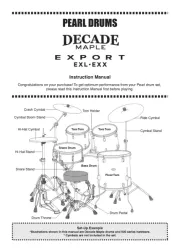
6 Augustus 2025
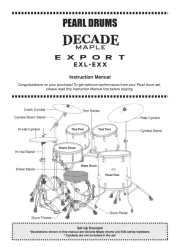
5 Augustus 2025
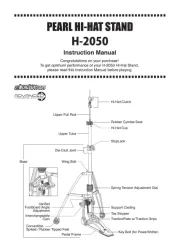
4 Augustus 2025
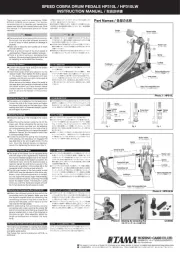
4 Augustus 2025

4 Augustus 2025

4 Augustus 2025

7 Juli 2025
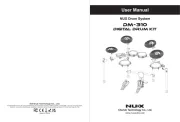
5 Juli 2025

3 Maart 2025

30 Januari 2025